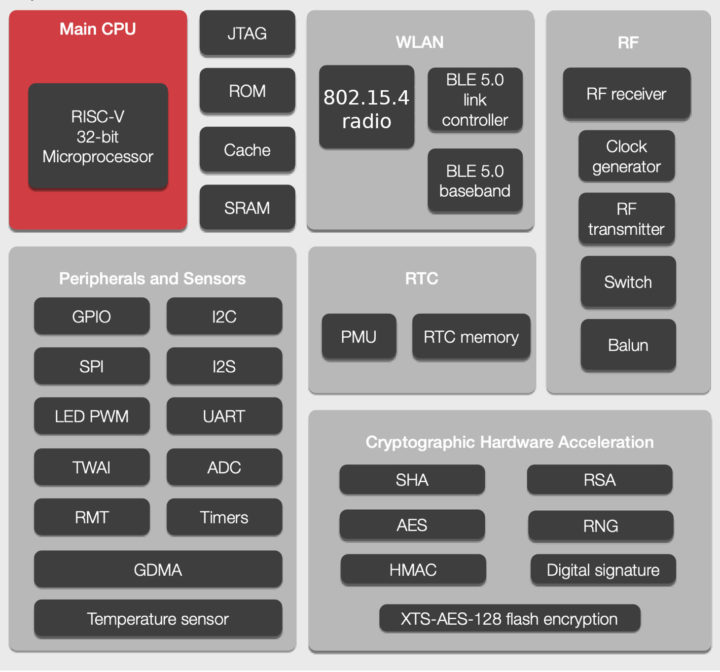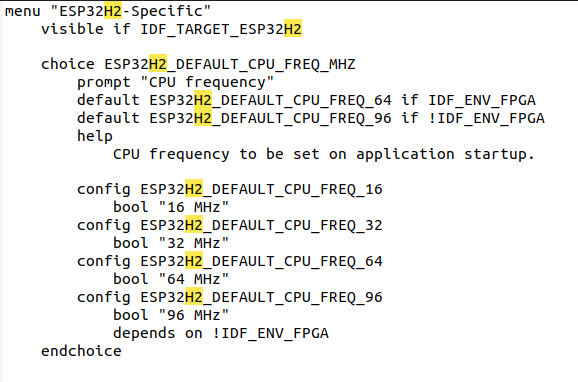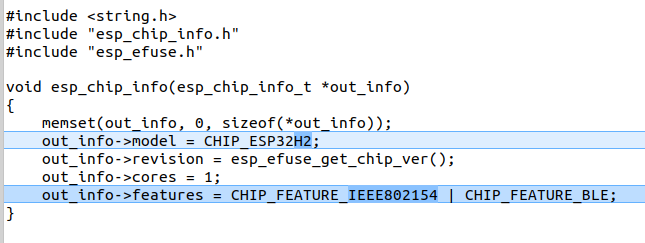Espressif Systems is working on yet another RISC-V chip with ESP32-H2 SoC offering Bluetooth LE and 802.15.4 connectivity showing up in the ESP-IDF framework source code.
A code comparison shows ESP32-H2 is very similar to ESP32-C3 with a single RISC-V core, albeit clocked at up to 96 MHz, and the first Espressif SoC without WiFi, as the WiFi radio is replaced with an 802.15.4 radio for Thread, Zigbee, etc… that can be used for the development of Home Automation, Smart Lighting, and wireless sensor network applications.

While looking at the source code differences between ESP32-C3 and ESP32-H2, the really only major differences were the 802.15.4 radio and lower maximum frequency, and at the current time, it looks like most of the rest is unchanged, so it’s possible they kept the same amount of RAM (400KB), storage, and most of the same peripherals, but it could just well be the code has not been modified just yet.


|
1 2 3 4 5 6 7 8 |
void esp_chip_info(esp_chip_info_t *out_info) { memset(out_info, 0, sizeof(*out_info)); out_info->model = CHIP_ESP32C3; out_info->revision = esp_efuse_get_chip_ver(); out_info->cores = 1; out_info->features = CHIP_FEATURE_WIFI_BGN | CHIP_FEATURE_BLE; } |
The code will evolve over time, and you can find references to ESP32H2 in ESP-IDF Github’s repo.
Via BirdTehstep

Jean-Luc started CNX Software in 2010 as a part-time endeavor, before quitting his job as a software engineering manager, and starting to write daily news, and reviews full time later in 2011.
Support CNX Software! Donate via cryptocurrencies, become a Patron on Patreon, or purchase goods on Amazon or Aliexpress




